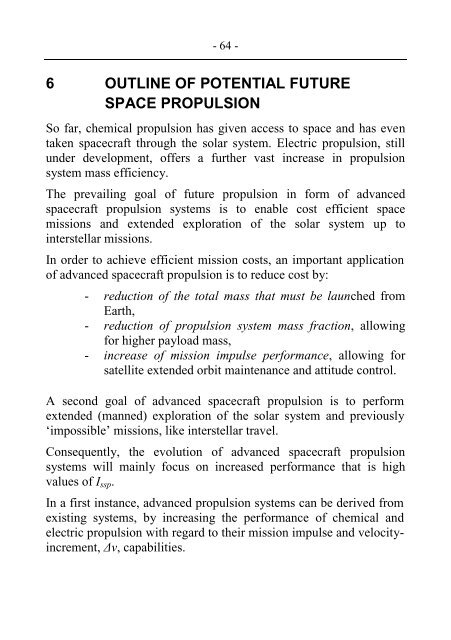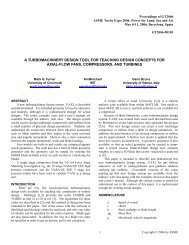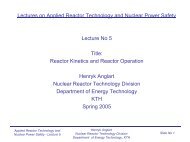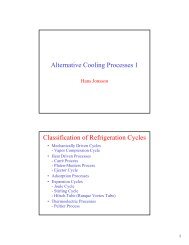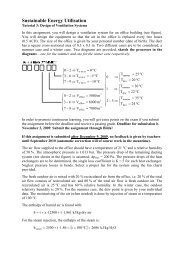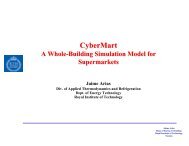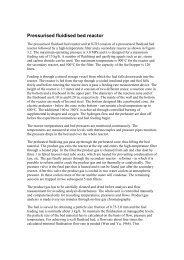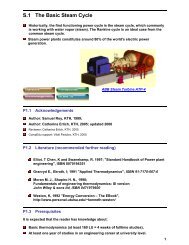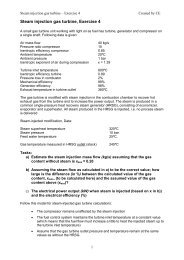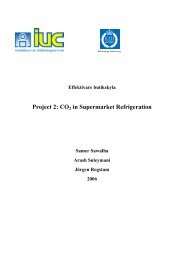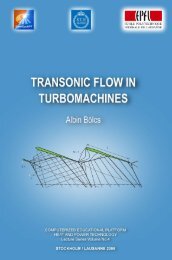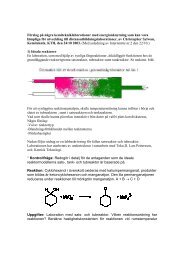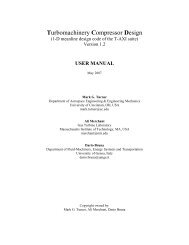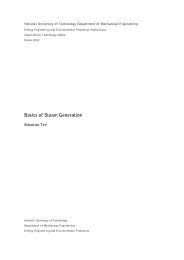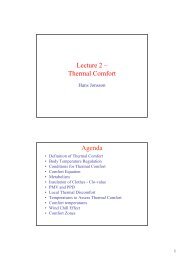SPACECRAFT PROPULSION - KTH
SPACECRAFT PROPULSION - KTH
SPACECRAFT PROPULSION - KTH
- No tags were found...
You also want an ePaper? Increase the reach of your titles
YUMPU automatically turns print PDFs into web optimized ePapers that Google loves.
- 64 -6 OUTLINE OF POTENTIAL FUTURESPACE <strong>PROPULSION</strong>So far, chemical propulsion has given access to space and has eventaken spacecraft through the solar system. Electric propulsion, stillunder development, offers a further vast increase in propulsionsystem mass efficiency.The prevailing goal of future propulsion in form of advancedspacecraft propulsion systems is to enable cost efficient spacemissions and extended exploration of the solar system up tointerstellar missions.In order to achieve efficient mission costs, an important applicationof advanced spacecraft propulsion is to reduce cost by:- reduction of the total mass that must be launched fromEarth,- reduction of propulsion system mass fraction, allowingfor higher payload mass,- increase of mission impulse performance, allowing forsatellite extended orbit maintenance and attitude control.A second goal of advanced spacecraft propulsion is to performextended (manned) exploration of the solar system and previously‘impossible’ missions, like interstellar travel.Consequently, the evolution of advanced spacecraft propulsionsystems will mainly focus on increased performance that is highvalues of I ssp .In a first instance, advanced propulsion systems can be derived fromexisting systems, by increasing the performance of chemical andelectric propulsion with regard to their mission impulse and velocityincrement,Δv, capabilities.


